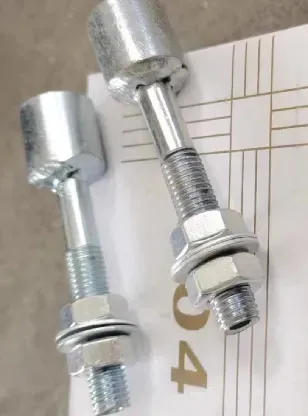loading...
- No. 9, Xingyuan South Street, Dongwaihuan Road, Zaoqiang County, Hengshui, Hebei, China
- admin@zjcomposites.com
- +86 15097380338
- Welcome to visit our website!
frp guardrail
Understanding FRP Guardrails Key Concepts and Importance
In the realm of construction and civil engineering, safety is of paramount importance. One of the essential components that contribute to safety in various environments, especially in infrastructure projects, is the use of guardrails. Among the different materials available, Fiber Reinforced Polymer (FRP) has gained significant attention due to its unique properties and advantages over traditional materials. This article delves into the significance of FRP guardrails, their benefits, and their applications.
What is FRP?
Fiber Reinforced Polymer (FRP) is a composite material made of a polymer matrix reinforced with fibers. The fibers are typically made from materials like glass, carbon, or aramid, providing the necessary strength and durability to the polymer. FRP is known for its high strength-to-weight ratio, corrosion resistance, and structural integrity, making it an ideal choice for various applications, including guardrails.
The Importance of Guardrails
Guardrails are safety barriers designed to prevent vehicles or individuals from straying into hazardous areas. They are critical in numerous settings, such as highways, bridges, and construction sites. The primary functions of guardrails include
1. Preventing Accidents Guardrails act as a physical barrier, reducing the risk of vehicles veering off the road or into dangerous areas. 2. Protecting Pedestrians In urban areas, guardrails ensure pedestrian safety by keeping foot traffic away from dangerous zones, such as busy roadways. 3. Minimizing Damage By containing vehicles during an accident, guardrails can prevent further harm to drivers and passengers, as well as protecting nearby structures.
Advantages of FRP Guardrails
The utilization of FRP for guardrails offers numerous advantages that make it a preferred choice for many engineering projects
1. Corrosion Resistance Unlike traditional materials such as steel, FRP does not rust or corrode when exposed to moisture and other environmental factors. This property significantly extends the lifespan of guardrails, particularly in coastal areas or regions with high humidity.
frp guardrail

2. Lightweight FRP is considerably lighter than metals like steel or aluminum. This characteristic makes handling and installation easier, reducing labor costs and time during construction.
3. High Strength Despite its lightweight nature, FRP possesses exceptional strength, making it capable of withstanding high-impact forces. This robustness ensures that FRP guardrails can effectively protect against vehicle collisions.
4. Versatile Design FRP can be molded into various shapes and sizes, allowing for customized guardrail solutions that can adapt to specific project requirements. This flexibility in design enhances aesthetic integration into different environments.
5. Low Maintenance FRP guardrails require minimal maintenance compared to traditional materials. Their inherent resistance to corrosion and wear reduces the need for frequent inspections and repairs, leading to lower long-term costs.
Applications of FRP Guardrails
FRP guardrails find applications in various settings, including
- Highways and Roads To protect vehicles from steep embankments and hazardous areas, ensuring safe travel for commuters. - Bridges Implementing FRP guardrails on bridges ensures structural integrity while resisting the corrosive effects of water and de-icing salts. - Construction Sites Temporary FRP guardrails can effectively delineate hazardous zones, protecting workers and pedestrians in active construction environments. - Marine Environments In coastal regions, FRP guardrails provide an ideal solution, enduring exposure to saltwater without degrading over time.
Conclusion
In summary, FRP guardrails represent a significant advancement in safety engineering, merging durability with innovative material properties. As the demand for effective safety solutions in construction and infrastructure continues to grow, the adoption of FRP technology is likely to increase. By choosing FRP guardrails, project managers can ensure enhanced safety, reduced maintenance, and long-term reliability, addressing the critical need for secure environments in our increasingly complex world. Thus, understanding and implementing FRP guardrails is crucial for future engineering projects aiming for sustainability and safety.
-
The Rise of FRP Profiles: Strong, Lightweight, and Built to LastNewsJul.14,2025
-
SMC Panel Tanks: A Modern Water Storage Solution for All EnvironmentsNewsJul.14,2025
-
GRP Grating: A Modern Solution for Safe and Durable Access SystemsNewsJul.14,2025
-
Galvanized Steel Water Tanks: Durable, Reliable, and Ready for UseNewsJul.14,2025
-
FRP Mini Mesh Grating: The Safer, Smarter Flooring SolutionNewsJul.14,2025
-
Exploring FRP Vessels: Durable Solutions for Modern Fluid HandlingNewsJul.14,2025
-
GRP Structures: The Future of Lightweight, High-Performance EngineeringNewsJun.20,2025
